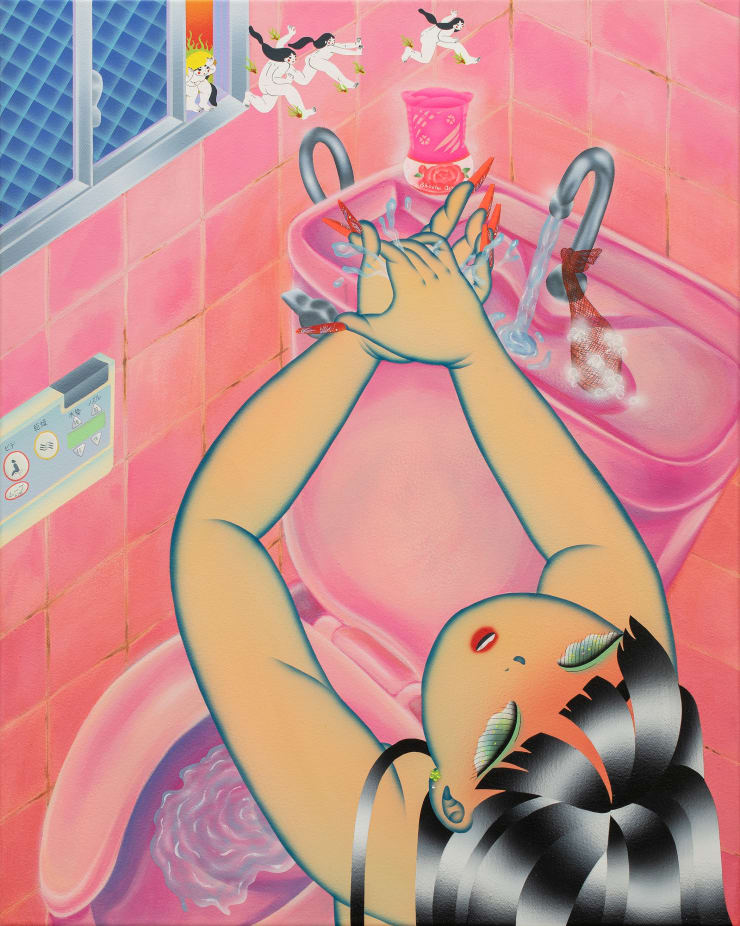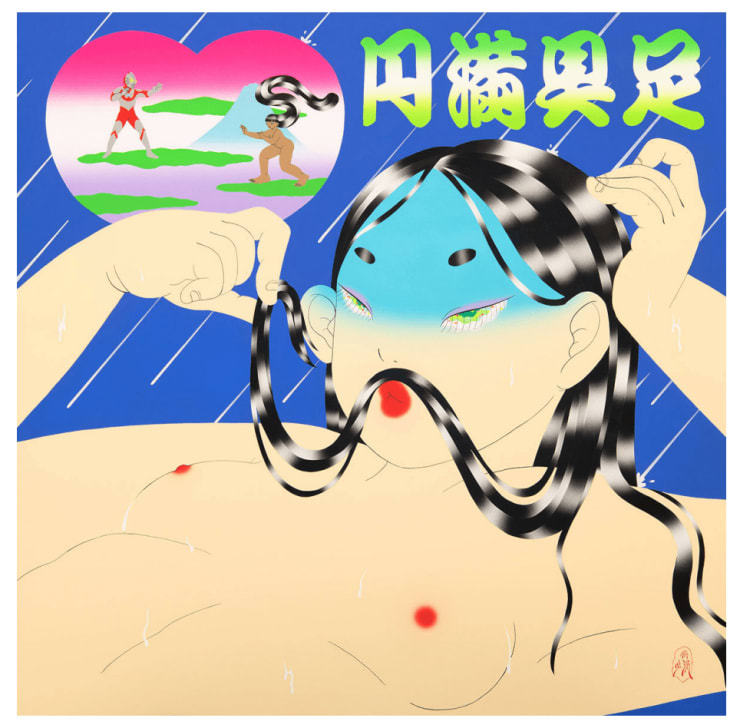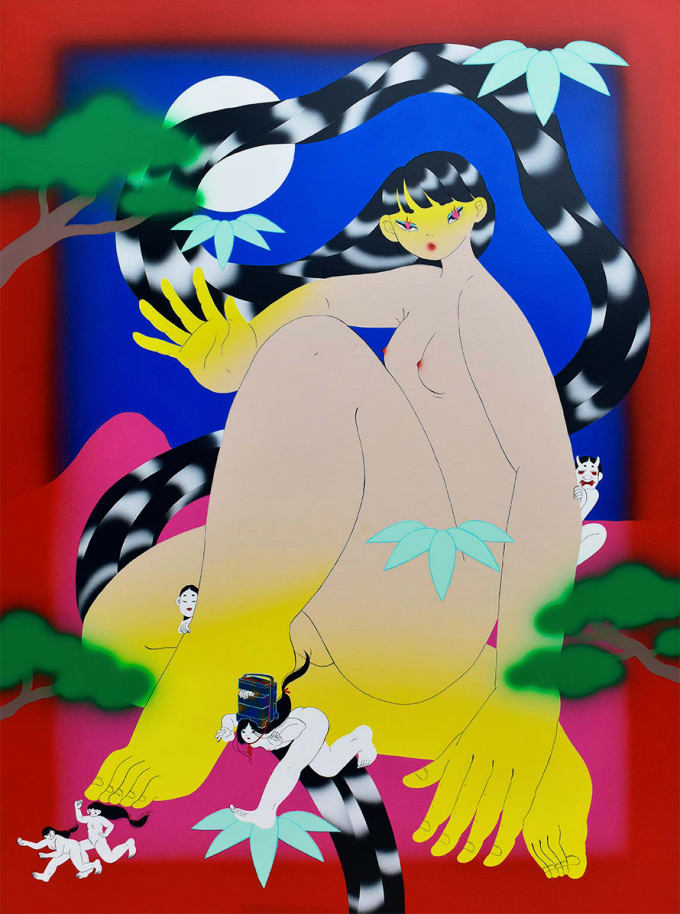Maya Fuji
Maya Fuji (b. 1988 Kanazawa, Japan) is a self taught artist who shifted careers midway through her MBA program to pursue her passion in visual arts and painting. Fuji immigrated to Berkeley, CA at an early age, and spent her early years spending time back and forth between Kanazawa and Berkeley. She currently lives and works out of San Francisco.
Maya Fuji explores the liminal space of being an issei (first-generation Japanese) mixed-race woman in the United States. Through cultural hybridity and juxtaposition, she interrogates how one stays connected to cultural heritage when there is no physical space or home to return to.
Fuji’s paintings often depict peaceful domestic scenes of women relaxing in total comfort. Her nude figures exist communally, untethered by social norms of nakedness or shame of their own bodies, insouciant of private or public spaces. Like spirits, they embody both joy and grief, celebration and loss, framed by activities and memories in a typical Japanese household.
A recurring theme in her work is the exploration of identity formation and evolution in the context of diasporic generations living abroad. Imbuing the complexity of being multicultural, multinational, and multiracial is central to her works, as her paintings portray the nostalgia of childhood memories alongside feelings of being a foreigner while simultaneously navigating Japanese and American communities. In her work she contemplates how ethnically mixed people, immigrants, and children of immigrants retain practices and traditions, shifting and morphing habits, often re-emerging as new ways of being.
Fascinated by traditional Japanese mythology and folklore as well as Showa and Heisei–era subcultures, Fuji interweaves traditional and modern iconography throughout her paintings, expanding on these themes within the context of her personal experiences. She investigates the idea of animism through the Japanese concept of Tsukumogami and Yaoyorozu No Kami, creating an active engagement of the dualistic and juxtaposing nature of her cultural experiences. While Tsukumogami are household objects that obtain a spirit or soul over a century (first depicted in the Hyakkiyakō Emaki scrolls of the Muromachi Period around 1336 to 1573), Yaoyorozu No Kami are drawn from the Shinto belief that gods reside in everything in this world, including nature and schools of thought. Both Tsukumogami and Yaoyorozu No Kami are believed to be deities with the ability to bring both blessing or harm to humans, as such, they are both equally revered and feared. By imagining the spirits immigrating with her family to the Bay Area, she contemplates how they would exist in the modern day. Fuji is inspired to give life to her familial history through myth-making. She questions how these spirits would coexist or meld with the spirits in this new land, envisioning a visual language of how these traditions could take life, live alongside one another, or become one.
Illuminating self-discovery through narration and an investigation of her lived experiences, Fuji uses her work as a catalyst to reconnect with and reclaim space within her heritage and create community.















